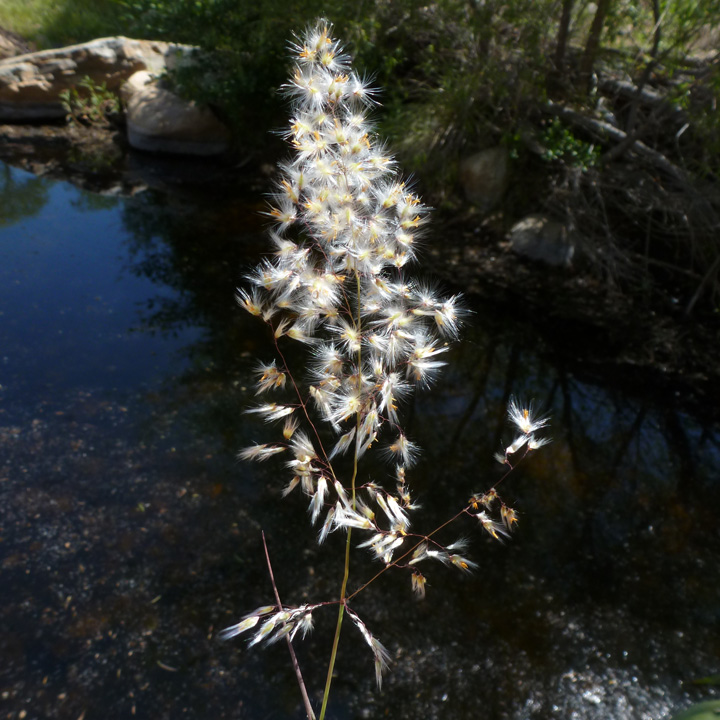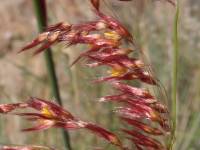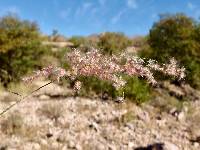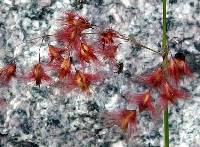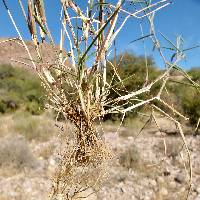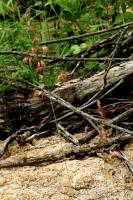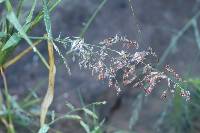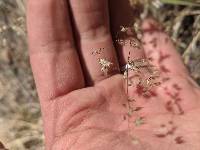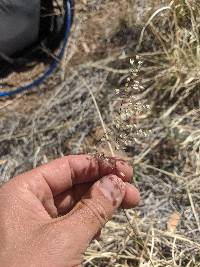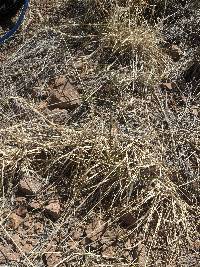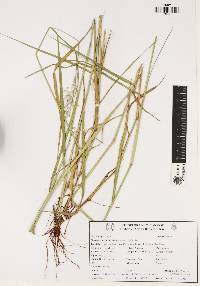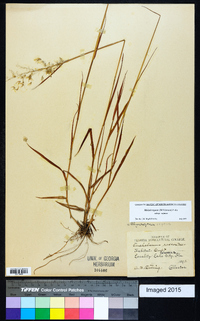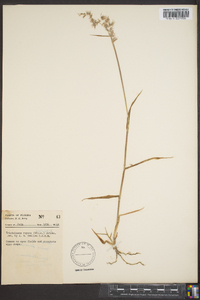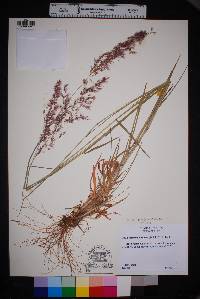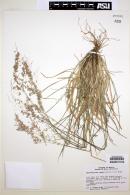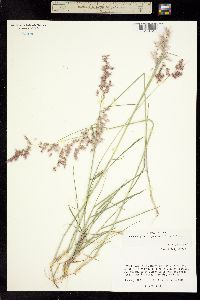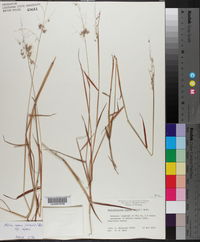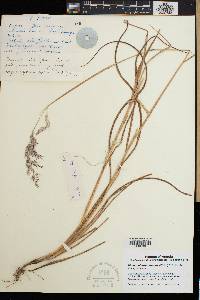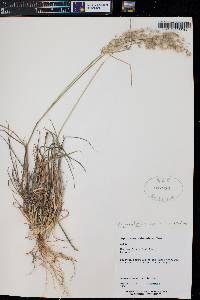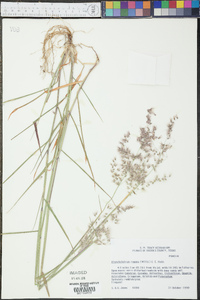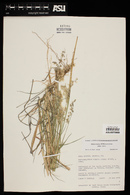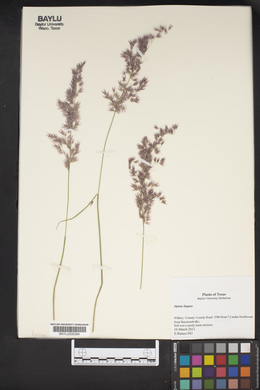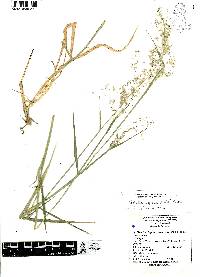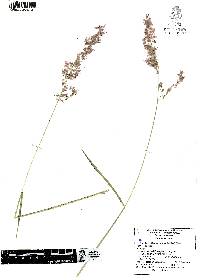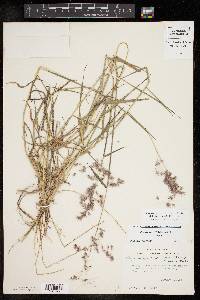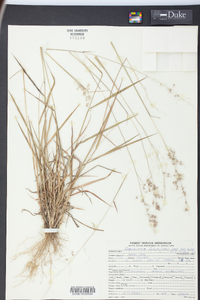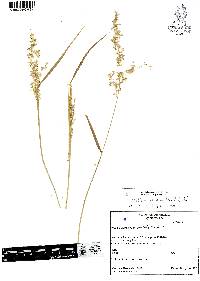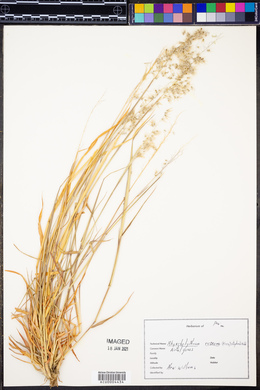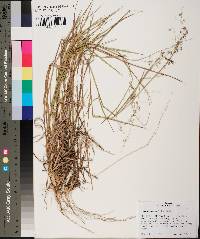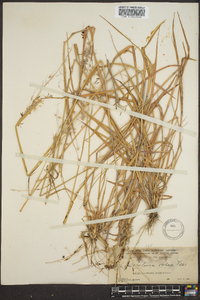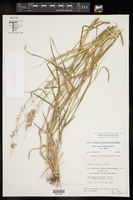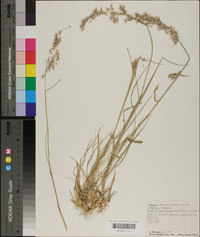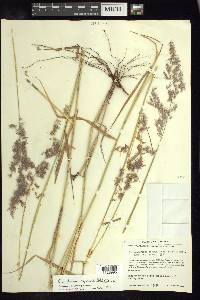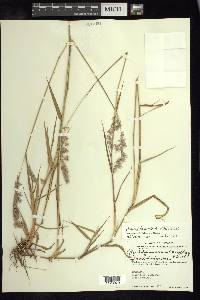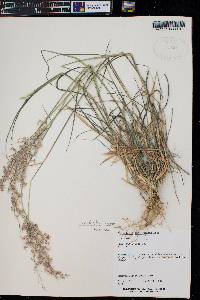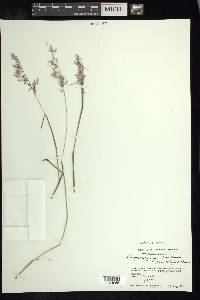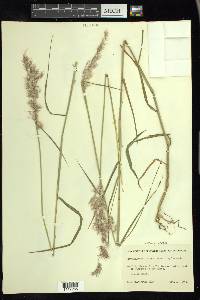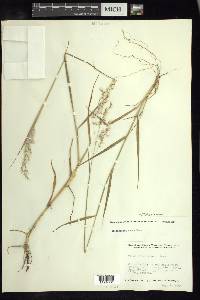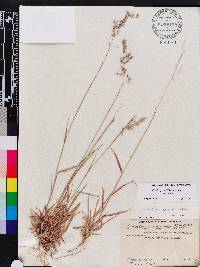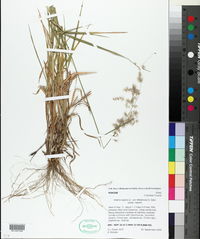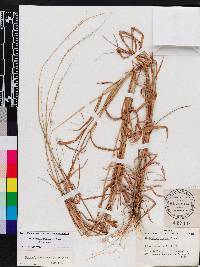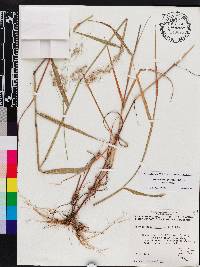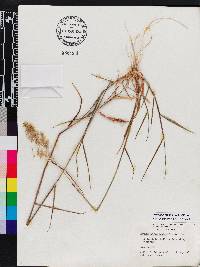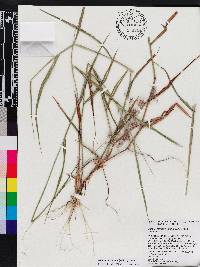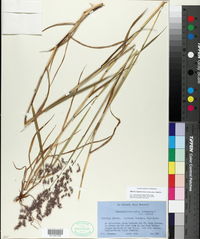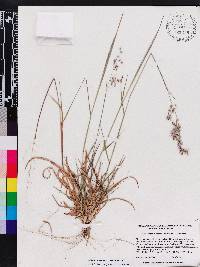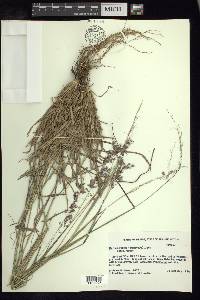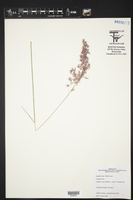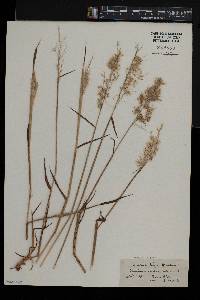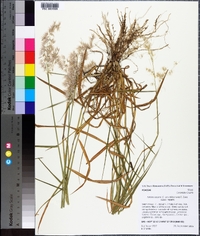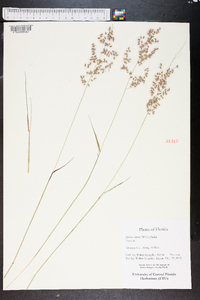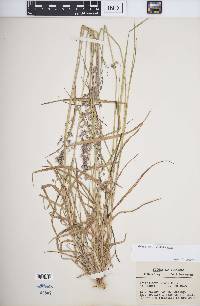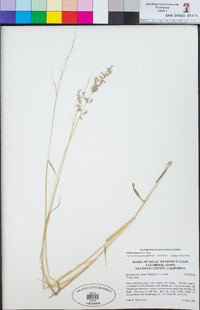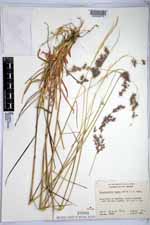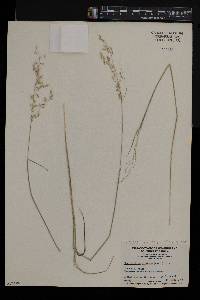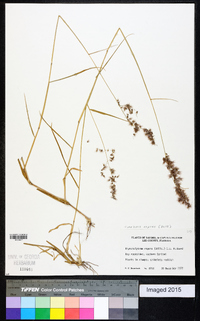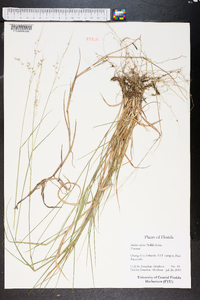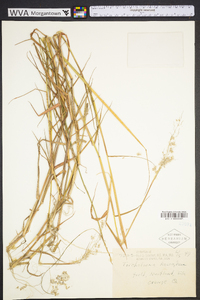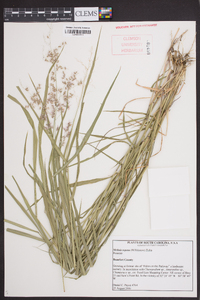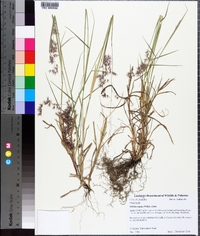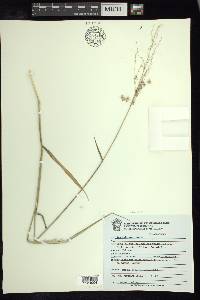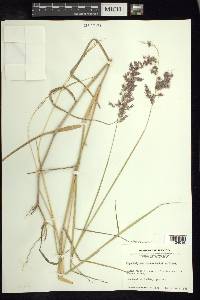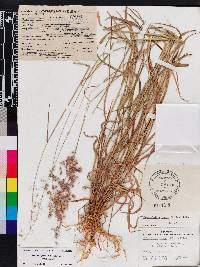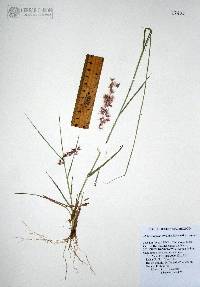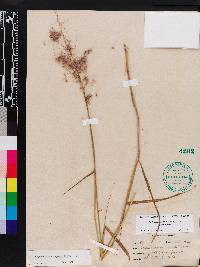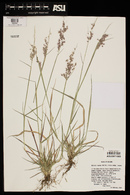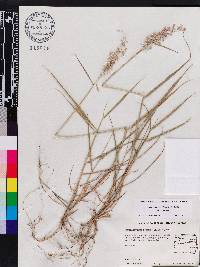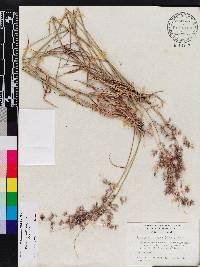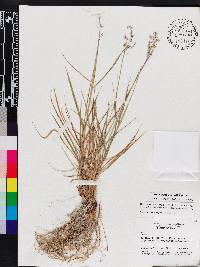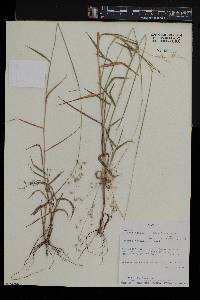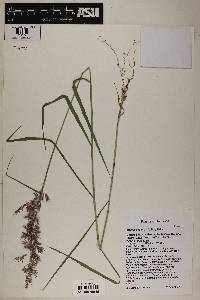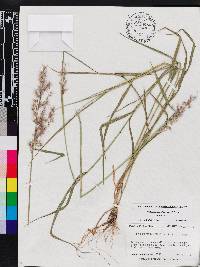
|
|
|
|
Family: Poaceae
Creeping Molasses Grass, more...rose Natal grass, Natal grass (es: zacate rosado, espiga colorada, zacate natal)
[Erianthus repens (Willd.) P. Beauv., moreMelinis rosea (Nees) Hack., Panicum roseum (Nees) Steud., Panicum roseum f. hirtum Kuntze, Panicum tonsum (Nees) Steud., Rhynchelythrum repens (Willd.) C.E.Hubb., Rhynchelytrum dregeanum var. annuum Chiov., Rhynchelytrum dregeanum var. intermedium , Rhynchelytrum repens (Willd.) C.E. Hubbard, Rhynchelytrum repens var. roseum (Nees) Chiov., Rhynchelytrum roseum (Nees) Stapf & C.E. Hubbard ex Bews, Rhynchelytrum tonsum (Nees) Lanza & Mattei, Saccharum repens Willd., Tricholaena repens (Willd.) A.S. Hitchc., Tricholaena repens var. rosea (Nees) Alberts., Tricholaena rosea Nees, Tricholaena tonsa Nees] |
Plants annuals or short-lived perennials. Culms (20)40-150 cm, decumbent, usually rooting at the lower nodes; nodes pubescent; internodes glabrous or with papillose-based hairs, hairs to 4.7 mm. Sheaths glabrous or with papillose-based hairs, hairs 0.5-4.7 mm; ligules of hairs, 0.7-2.2 mm; blades 3.6-27 cm long, 2-9(14) mm wide, flat, glabrous or pubescent, with or without papillose-based hairs. Panicles (4)6-22 cm long, (1.5)2.5-12 cm wide; primary branches to 11 cm, ends of the primary branches, secondary branches, and pedicels capillary; pedicels 0.6-5.3 mm, usually hairy distally, hairs to 6.3 mm. Spikelets 2-5.7 mm; calluses hairy, hairs to 4 mm. Lower glumes 0-1.7 mm, pubescent, sometimes with papillose-based hairs, apices rounded, truncate, or slightly cleft; upper glumes (1.9)2.3-4.9 mm, enclosing the upper florets, gibbous basally, densely pubescent, hairs to 7 mm, sometimes papillose-based, varying from white to rose or darkish purple, apices tapering, beaked, glabrous, unawned or awned, awns to 4.1 mm; lower florets staminate or sterile; lower lemmas 1.9-4.8 mm, unawned or with awns to 4.2 mm; lower paleas 0.9-4 mm; anthers (0.8)1.5-2.6 mm, orange-brown to orange; upper lemmas 1.8-2.7 mm, glabrous; anthers 3, 1.2-1.7 mm, orange-brown to orange. Caryopses 1.3-1.9 mm long, 0.6-0.9 mm wide. 2n = 36. Melinis repens is probably native to Africa and western Asia. It is now established throughout the subtropics, including the southern portion of the Flora region. It has been grown as an ornamental, but it is now established and often weedy in warmer portions of the region. Plants in the Flora region belong to Melinis repens (Willd.) Zizka subsp. repens, one of four weakly-separated subspecies. Dr. David Bogler, USDA NRCS PLANTS Database Annuals, Terrestrial, not aquatic, Stems trailing, spreading or prostrate, Stems nodes swollen or brittle, Stems geniculate, decumbent, or lax, sometimes rooting at nodes, Stems mat or turf forming, Stems terete, round in cross section, or polygonal, Stems branching above base or distally at nodes, Stem nodes bearded or hairy, Stem internodes solid or spongy, Stem internodes hollow, Stems with inflorescence less than 1 m tall, Stems with inflorescence 1-2 m tall, Stems, culms, or scapes exceeding basal leaves, Leaves mostly cauline, Leaves conspicuously 2-ranked, distichous, Leaves sheathing at base, Leaf sheath mostly open, or loose, Leaf sheath smooth, glabrous, Leaf sheath hairy, hispid or prickly, Leaf sheath and blade differentiated, Leaf blades linear, Leaf blades 2-10 mm wide, Leaf blades mostly flat, Leaf blade margins folded, involute, or conduplicate, Leaf blades mostly glabrous, Leaf blades more or less hairy, Leaf blades scabrous, roughened, or wrin kled, Ligule present, Ligule a fringed, ciliate, or lobed membrane, Ligule a fringe of hairs, Inflorescence terminal, Inflorescence an open panicle, openly paniculate, branches spreading, Inflorescence solitary, with 1 spike, fascicle, glomerule, head, or cluster per stem or culm, Inflorescence a panicle with narrowly racemose or spicate branches, Inflorescence branches more than 10 to numerous, Flowers bisexual, Spikelets pedicellate, Spikelets laterally compressed, Spikelet less than 3 mm wide, Spikelets with 1 fertile floret, Spikelets with 2 florets, Spikelets solitary at rachis nodes, Spikelets all alike and fertille, Spikelets bisexual, Spikelets disarticulating below the glumes, Spikelets conspicuously hairy , Rachilla or pedicel glabrous, Glumes present, empty bracts, Glumes 1 clearly present, the other greatly reduced or absent, Glumes 2 clearly present, Glumes distinctly unequal, Glumes equal to or longer than adjacent lemma, Glume equal to or longer than spikelet, Glumes awned, awn 1-5 mm or longer, Glume surface hairy, villous or pilose, Glumes 4-7 nerved, Lemma 1 nerved, Lemma 3 nerved, Lemma glabrous, Lemma apex dentate, 2-fid, Lemma awnless, Lemma margins thin, lying flat, Lemma straight, Palea present, well developed, Palea about equal to lemma, Palea 2 nerved or 2 keeled, Stamens 3, Styles 2-fid, deeply 2-branched, Stigmas 2, Fruit - caryopsis.
FNA 2003, Gould 1980 Common Name: rose Natal grass Duration: Annual Nativity: Non-Native Lifeform: Graminoid General: Annual or short lived perennial grass; stems 40-150 cm, decumbent to erect with geniculate bases, rooting at lower nodes; nodes pubescent; internodes glabrous or with papillose-based hairs to 5 mm. Vegetative: Sheaths glabrous or with papillose-based hairs 0.5-5 mm; blades 3-27 cm long, 2-9 mm wide, flat, glabrous or pubescent; ligules of hairs, 1-2 mm long. Inflorescence: Panicles 6-22 cm long, 2.5-12 cm wide; primary branches to 11 cm; pedicels, secondary branches, and ends of primary branches are capillary; pedicels to 6 mm, usually hairy near the end, the hairs up to 6 mm long; spikelets 2-6 mm, 2-flowered, with hairy calluses; lower glumes tiny, pubescent, with rounded apices; upper glumes 2.5-5 mm, enclosing upper florets, densely pubescent with hairs to 7 mm, varying from white to rose or darkish purple, unawned or with awns to 4 mm; lower florets sterile, the lemmas unawned or with awns to 4 mm; upper florets bisexual, the lemmas 2 mm, unawned, glabrous. Ecology: Found on rocky slopes and in moist canyon bottoms from 2,500-4,500 ft (762-1372 m); flowers July-November. Distribution: Native to Africa and West Asia; Introduced to subtropical regions worldwide; in the southern US, from CA east to NC; south through the Greater Antilles, MEX, into S. Amer.; also in Europe, Asia and Australia. Notes: This attractive exotic grass is like no other, with its open, drooping pink-silvery inflorescence which glimmers in the sun. This species has naturalized in the southwest after being seeded for range improvement. Ethnobotany: Valued as livestock fodder in Africa; used in making banana beer in Tanganyika. Etymology: Melinis comes from Greek mel for honey, the genus are also known as molasses grass, while repens means having rooting or creeping stems. Synonyms: Rhynchelytrum repens, R. roseum, Saccharum repens, Tricholaena repens, T. rosea Editor: SBuckley 2010, FSCoburn 2015, AHazelton 2015 |
|
|
|

